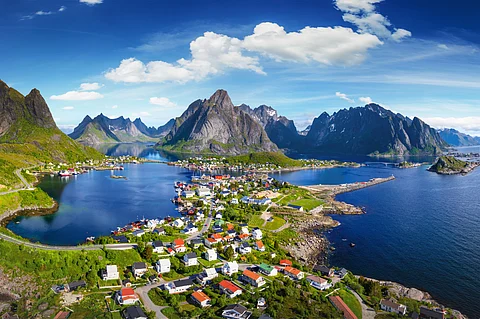
- Destinations
- Experiences
- Stay
- What's new
- Celebrating People
- Responsible Tourism
- CampaignsCampaigns
- Subscribe
- Buy Now

Norway will introduce a tourist tax from the summer of 2026, allowing municipalities to charge a three per cent fee on overnight stays and cruise ship passengers. The move comes as tourism in the country hits record highs, putting growing pressure on local infrastructure.
The new “visitor’s contribution” is not a nationwide mandate. Local councils must first apply for approval by showing that tourism is straining public services. Once approved, they can collect the tax on hotels, guesthouses and short-term rentals. Cruise passengers are included, but campervans, tents and boats are exempt.
The aim of the fee is twofold: to generate funds for essential local infrastructure such as toilets, trails, signage and parking, and to ensure the costs of tourism are not borne entirely from taxes paid by local residents. The funds must be spent on travel-related projects and not in general municipal budgets.
Norway has long been admired for its fjords, northern lights and untouched Arctic landscapes. But with popularity comes pressure.
In 2024 alone, the country recorded a staggering 38.6 million overnight stays, over 12 million of which were by international travellers. This surge has left many destinations, notably smaller towns and nature-focused locales, grappling with overburdened amenities and limited resources.
Places like the Lofoten Islands and Tromsø, once hidden gems, are now overwhelmed during peak seasons. Concerns range from long queues at restrooms and traffic congestion to reports of cruise ship passengers using private gardens as toilets.
In several towns, daily cruise visitors outnumber locals, while parked vehicles block access routes and emergency paths. The plan is seen as part of a broader shift in Europe, where cities are imposing tourist taxes to deal with mass tourism. Norway had previously avoided such charges, in part due to its high domestic taxes and its commitment to the right to roam (known as allemannsretten), which guarantees public access to nature.
This initiative is part of a broader Norwegian strategy to make tourism work for both visitors and residents. Funds from the tax will be reinvested in eco-friendly transport, better waste management systems and preservation of natural attractions—ensuring that future visitors enjoy the same pristine landscapes as those before them.
The tax comes at a time when climate-conscious travelers are shifting northward in search of cooler destinations. Norway, with its reputation for environmental stewardship, is now facing the dual challenge of staying welcoming while staying sustainable.
(With inputs from multiple news reports)
